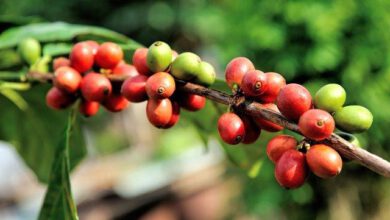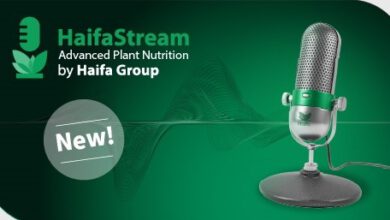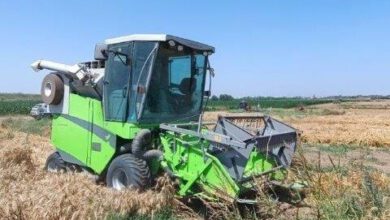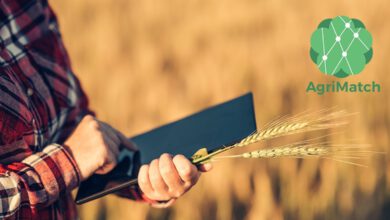Biohumigat for greenhouse table grapes – to be one step ahead of everyone
We already witnessed impressive results for Biohumigat treatment of greenhouse table grapes in terms of fruit size
Yakov Henig,M.Sc Agronomist, Gat Fertilizers, yacovh@deshengat.co.il

grapevines (vitis vinifera) are a major important agricultural crop worldwide, and particularly in israel. their cultivation requires a cold season including leaf fall when differentiation of dormant buds occurs. it also requires a warmer season in which the vine awakens and bears fruit.
the grapevine has relatively low chilling requirements, so it can be cultivated in a variety of zones, with ripening dates spread over a long period during the season. in addition, over the past decades early table varieties have been bred that complete the seasonal growing cycle to ripening within just a four-month period and can be marketed very early.
furthermore, growing table grapes in greenhouses is a common practice in relatively warm areas (mainly in the jordan rift), enabling an earlier grape cultivation period. the vines are awakened through early pruning and chemical stimulant spray, so that the winter serves as a growth period. in this way the vine grows in non-optimal conditions of cold and even frost at night, and on the other hand is sometimes overheated in the greenhouse.
while testing supplementary products for standard fertilization, deshen gat markets a variety of bio-stimulants for plant enrichment. one of them is biohumigat, a product characterized by quality humic acids content. these materials are known to improve soil structure and to help the plant absorb nutrients, and to induce defense mechanisms against stress. for this reason we decided to test the effect of biohumigat on table grapes in the greenhouse.
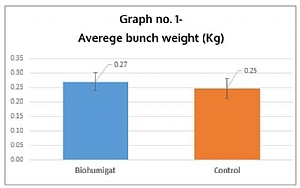 |
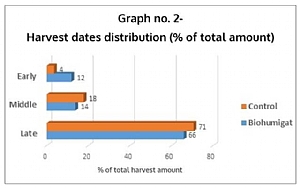 |
the experiment took place during the 2017-2018 winter at moshav bekaot, located in the higher jordan rift. it was conducted in a greenhouse vineyard, using a random block design- 4 trials and 4 control rows.
the treatment was continuous fertilization with biohumigat by a dosimeter. the measures studied constituted leaf area index (lai), number of clusters, yield weight, average cluster weight, grape weight and sugar level (brix). all treatments in the vineyard were carried out standardly by the farmer without our interference, including the harvest. grapes were harvested selectively at three different dates, in order to ensure marketable quality fruit in terms of grape size and appropriate sugar level (brix14.5<.0)
results:
biohumigat treatment consistently showed denser foliage over 5 lai measurements throughout the season i.e., the plants were more vigorous with this treatment. in terms of harvest parameters, number of clusters, overall weight, and sugar level, there was no significant difference between treatment and control.
by contrast, the grape weight was consistently greater with biohumigat for all 3 harvests, and the cluster weight (graph 1) was significantly greater (p<0.1), so that each cluster was larger and better suited for marketing as premium fruit.
additionally, the distribution between harvest dates differed (graph 2). at the first and earliest of the 3 harvests, the yield from the biohumigat treated grapes was three fold greater. such an early harvest is generally characterized by a higher price, and sometimes significantly more than the later harvest.
to summarize – in this season we already witnessed impressive, interesting results for biohumigat treatment of greenhouse table grapes, in terms of fruit size and the early harvest. as a result, the experiment is planned to continue next year as well.
this article was published in the special issue for fwd 2019

